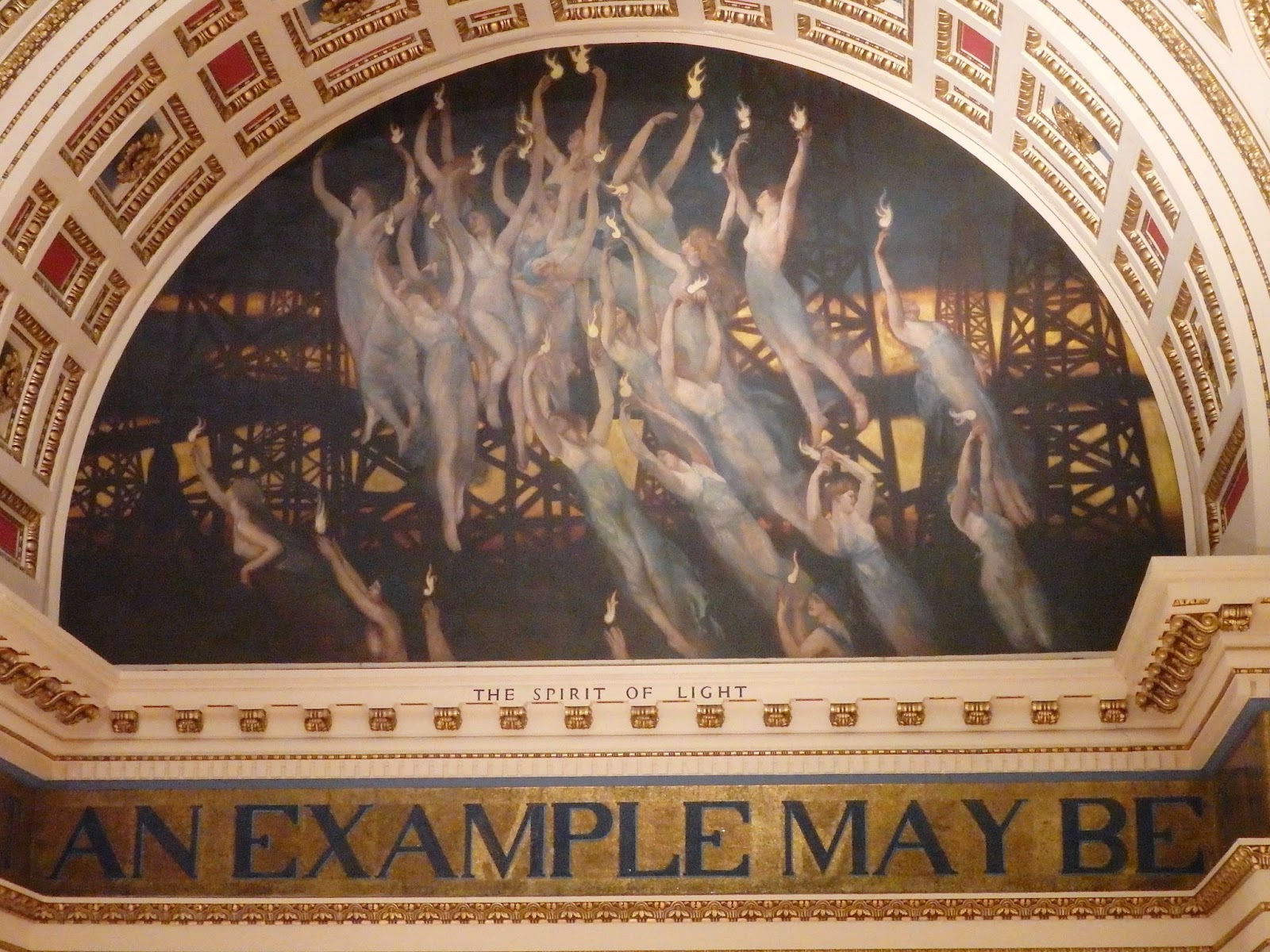 |
| "Many of the Rotunda's design features were borrowed from the Paris Opera House, including the Grand Staircase and three-tiered gallery." |
 |
| Click to enlarge these pictures to see some of the details of the building. |
 |
| "The Rotunda is illuminated by 48 portholes at the top of the dome and by nearly 4,000 lights." |
 |
| Looking down at the Grand Staircase. |
 |
| Our tour guide added much more information that is given in the brochure. |
 |
| Back out in the Rotunda, we viewed another of the paintings below the dome. |
 |
| Next stop was the Pennsylvania Supreme Court Room. |
 |
| This dome is not visible from the outside because it is covered. |
 |
| The glass light covers are cut so that the light comes through looking like a big X. |
 |
| The chandeliers in this room had figures in them. |
 |
| The stairs between the floors had lovely carved railings. |
 |
| Another one of the paintings in the Rotunda. |
 |
| "Six crystal chandeliers light the House. The fixtures range from two tons to over four tons each, and require over 1,000 light bulbs." |
 |
| "While the Senate still uses a voice-vote system, with members calling out "aye" or "nay," the House votes electronically, making it easier to tally the response of 203 members." |
 |
| Back out in the Rotunda for another look at the Grand Staircase before we leave the building. |


































No comments:
Post a Comment